It might sound corny, but there is surely nothing better than curling up in front of a good movie with a big bowl of popcorn.
Salty, sweet, or smothered in butter, popcorn is the ultimate comfort food, and one of the most popular snacks around.
Even better, this beloved snack can actually be good for us. As a whole grain, it’s high in fiber. It’s also high in simple carbohydrates, which can quickly (and briefly) raise serotonin levels, helping you to relax and improving your mood.
Just remember to lay off the extra salt and fat and to air pop your corn if you’re planning to consume it for health reasons!
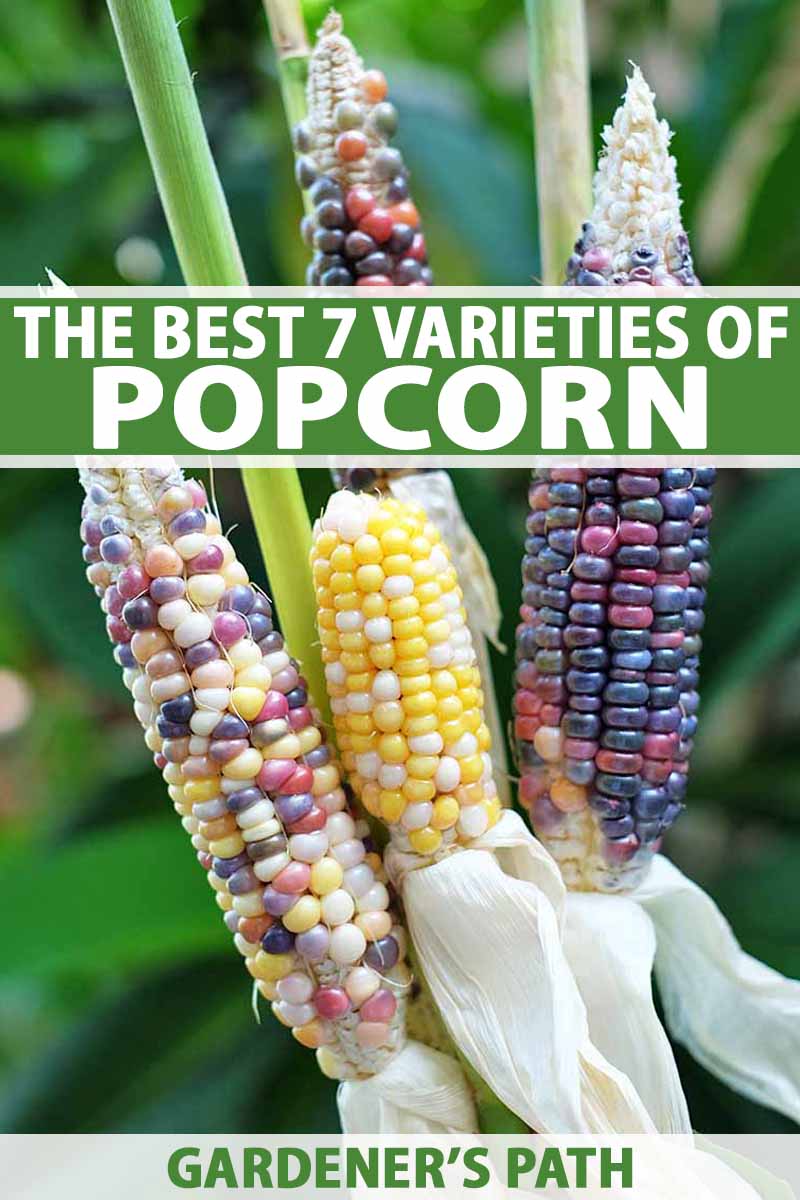
We link to vendors to help you find relevant products. If you buy from one of our links, we may earn a commission.
So, what better reason to have a “pop” at growing your very own mood-boosting corn in your backyard?
From beautiful, bright yellow kernels, to multicolored rainbow corn, there is surely a variety that will pique your interest.
Read on to find out about the best varieties of popcorn that you can grow at home!
7 of the Best Popcorn Varieties
Some Things to Know Before You Grow
Growing your own popcorn is really no different than growing regular sweet corn.
Plant and grow these seeds in your garden as you would any other kind of corn, allow the ears to fully mature, and wait to harvest until the husks turn brown. After that, snack to your heart’s content!
However, there is one thing to be aware of: It is not advisable to grow both popcorn and sweet corn in the same garden.
This is because these two plants will readily cross pollinate, resulting in the worst of both worlds – popcorn yields with a high percentage of unpopped kernels, and poor quality sweet corn.
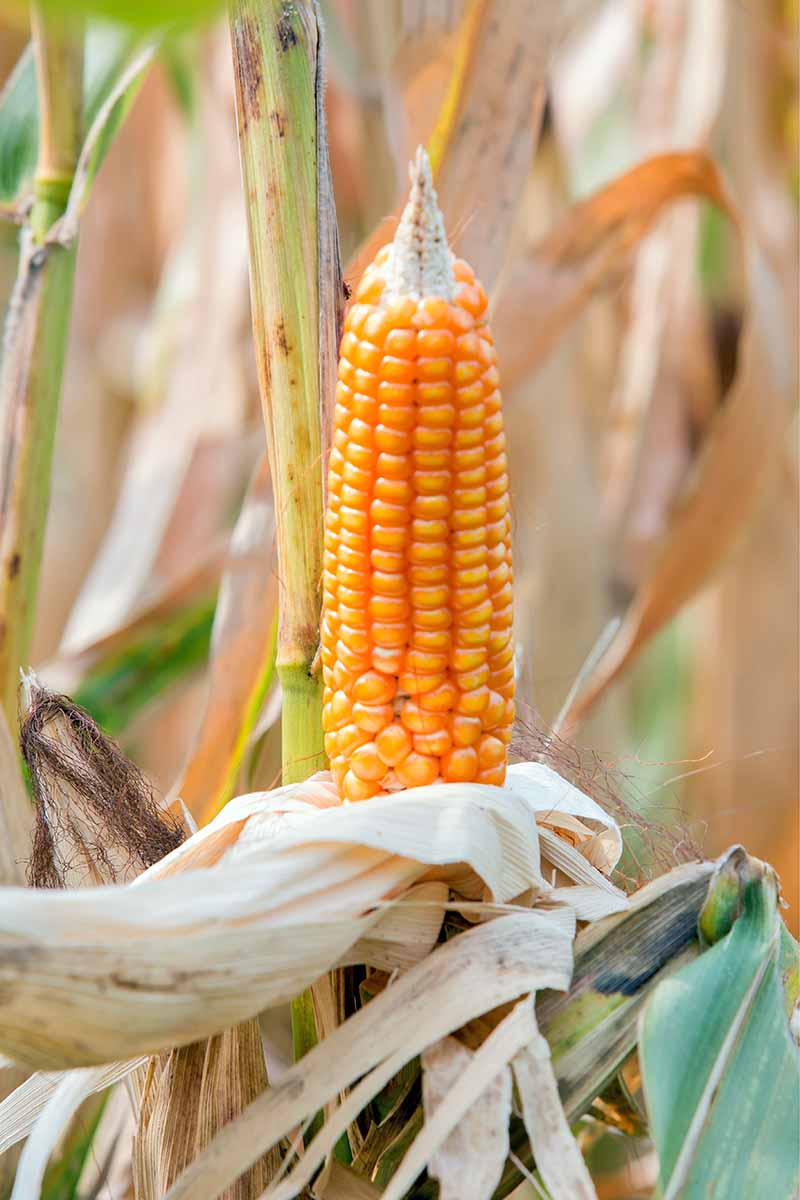
If you decide that sweet corn is more your thing, don’t miss our roundup of the best varieties! You can always switch to popcorn next year.
This plant matures in about 100 days, so you’ll have plenty of time after planting to decide on the perfect movie to pair with your harvest.
Each ear yields approximately one serving of popcorn, with each plant producing one or two ears.
Ready to get started? Here are my favorite cultivars for growing at home:
1. Carousel
I personally have a real penchant for rainbow colored veggies.
From tomatoes to chard, I am absolutely addicted to all multicolored edible crops that you can grow in your garden, and this variety is a perfect addition to any colorful collection.
Though this heirloom is often referred to as an ornamental cultivar, it is in fact edible.
Producing vividly multicolored mini ears four to five inches long, this sweet-tasting cultivar is ready in 100 to 110 days. Grow it in full sun, in USDA Hardiness Zones 3 to 11.
The cobs can then either be dried and displayed for ornamental use, or popped. This variety is perfect for snacking, as its tiny kernels pop up to be tender and crispy, with a very thin hull.
Dried kernels can also be ground into cornmeal.
You can find ‘Carousel’ seeds at True Leaf Market.
2. Glass Gem
The first time I saw and then planted this crop, I fell irrevocably in love with it.
Continuing the multicolored theme, this variety has to be the undisputed king of rainbow crops, producing beautiful kernels that come in a range of translucent, multi-colored shades of blue, yellow, red, and everything in between.
‘Glass Gem’ is really something that has to be seen to be believed, so it’s hard to do it justice here.
This particular variety was selected by Oklahoma farmer Carl Barnes, who began growing heirloom Native American varieties as a way to reconnect with his heritage.
The ears and stalks can be dried for ornamental use, and I’d suggest growing this visually arresting crop would be a great way to get the kids interested in gardening.
The kernels are perfect for popping or for grinding into cornmeal.
‘Glass Gem’ takes 80 days to reach maturity, and you can grow it in Zones 3 to 11. It thrives in warm, full sun conditions.
You can find seeds at Burpee.
3. Robust Yellow Hulles
Thanks to thin hulls, which make for easy popping, this Native American corn is known for its tasty, exploding kernels, perfectly adapted for making delicious popcorn.
When grown in full sun, this is a highly productive variety that produces long ears of corn on tall stalks. Expect about 110 days to maturity.
You can find seeds at True Leaf Market.
4. Shaman’s Blue
A winner in both the looks and taste categories, this unique blue hybrid is a perfect popper, producing large, white, sweet popcorn.
Heirloom ‘Shaman’s Blue‘ Seeds
And it gets better. This variety is highly nutritious, thanks to the fact that its dark blue kernels contain more antioxidants (namely anthocyanin and cyanidin) than your regular yellow varieties.
This variety originated in the Andes Mountains of Peru where it was traditionally ground into flour.
Now it is grown widely in Mexico and the Southwestern US, where it has become enormously popular thanks to its disease resistance and top-notch flour quality.
This variety will grow happily in Zones 3 to 12, and grows best in full sun.
You can find ‘Shaman’s Blue’ seeds available via Walmart.
5. Snow Puff
This F1 hybrid produces high yields of delicious, sweet, white corn, which expands to an enormous size when popped – perfect for movie nights. The kernels have exceptionally thin hulls.
This is variety grows eight-inch ears on seven-foot-tall stalks, and it requires full sun to thrive.
You can find packets of 25 seeds available via Walmart.
6. Strawberry
This heirloom variety is described by Burpee as a “pop star,” and I have to say I can’t disagree there (and thoroughly approve of their pun).
Producing several miniature ears between two and three inches long and filled with ruby red kernels, this beautiful, decorative variety looks just like large red strawberries.
This variety is ready to harvest in about 100 days.
Seeds are available from Burpee.
7. Tap Dancer
A striking option, ‘Tap Dancer‘ is an heirloom variety that produces white, purple, and yellow kernels on six-and-a-half-inch ears.
Vigorous plants grow up to nine feet tall, and ears are ready to harvest in 115 days.
You can find packets of seeds in a variety of sizes available at High Mowing Seeds.
Time to Get Popping!
With such beautiful varieties to choose from, I think it’s safe to conclude that growing your own popcorn is sure to leave you grinning from ear to ear!
Have you had a go at growing this tasty snack? Let me know how you got on in the comments section below!
And for more information on growing corn, check out some of our other guides:
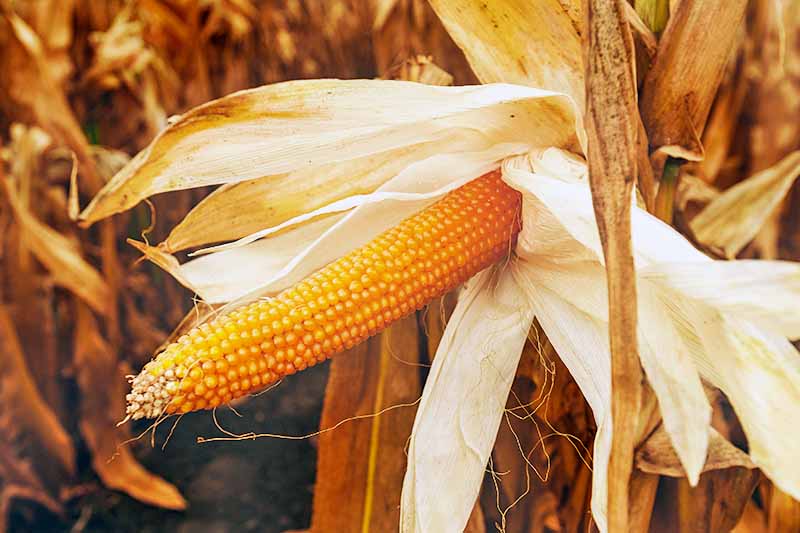

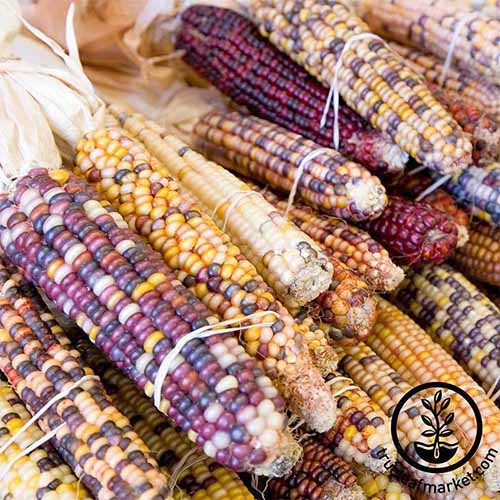
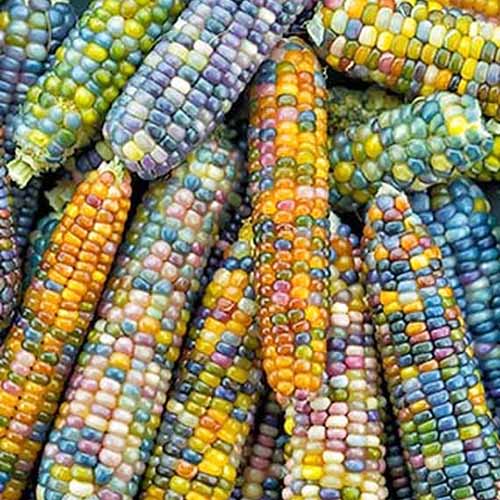
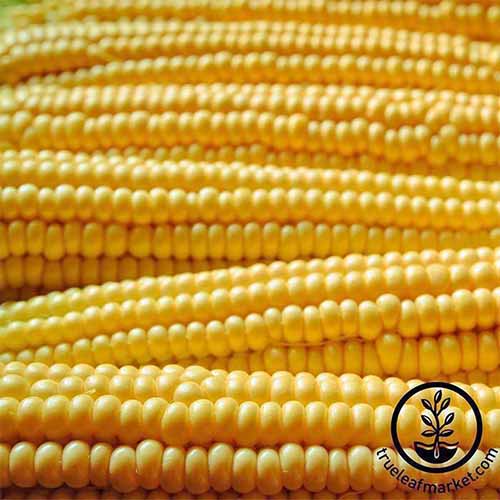
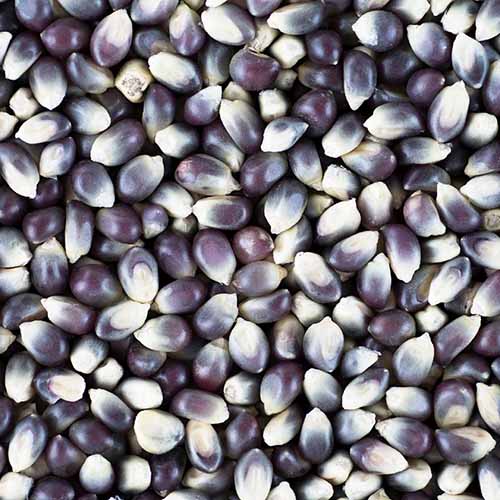
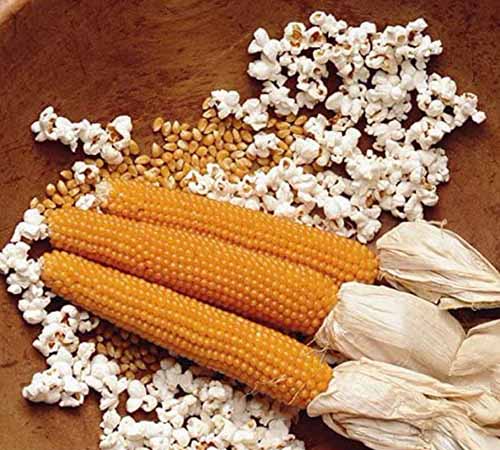
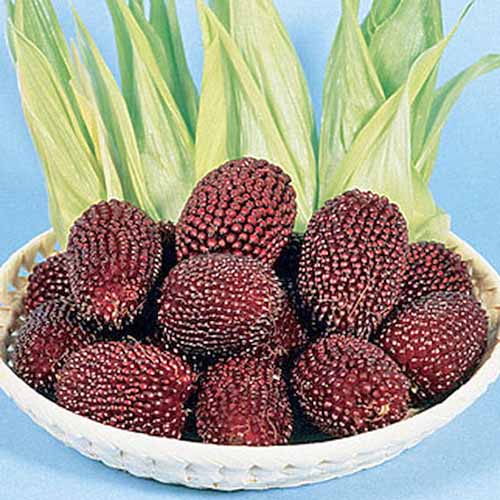
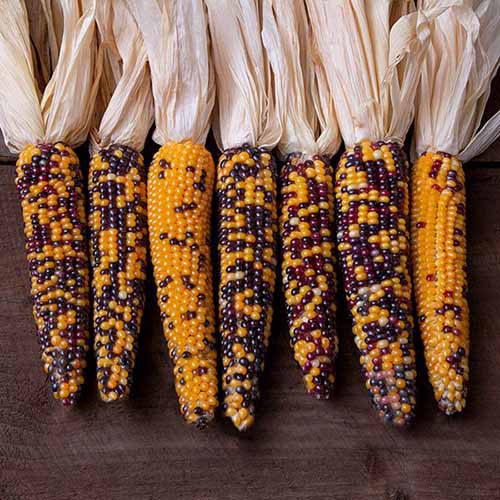
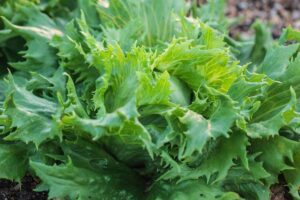
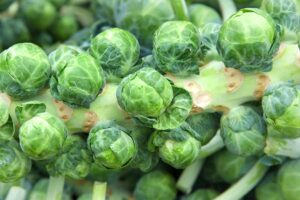
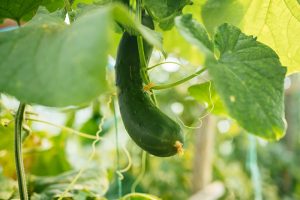
Thank you for your this good job. I wish to know how one can get seed for corn with highest pop ability.
“Pop-ability” is related to the moisture content of the kernels, with the ideal moisture level being around 14% – and understandably, this can be hard to monitor in a homegrown product. Popcorn that is too dry won’t pop, and some gardeners that grow their own use this method to test and adjust the moisture content of their harvest. I don’t know whether there is a certain cultivar known for having a higher overall moisture content or popping rate compared to others. It seems to me that this would have more to do with growing, harvest, and storage conditions.
How do you grow Lady’s Finger popcorn and what does it look like? I have planted some and it is ten feet tall. How tall will it grow and when will it start to form ears of corn? Dave in Mn
‘Lady Finger’ is a variety that typically grows to about 6 feet tall at maturity- sounds like you’ve grown some tall stalks! Narrow ears reach a mature length of about 6-7 inches, with yellow kernels. In Minnesota, you are probably in USDA Hardiness Zone 3 or 4 (possibly 5, in the southernmost parts of the state), with a growing season of about 90-160 days, depending on your location. When did you plant? This variety requires about 100 days to reach maturity, so if you planted in late May, you should expect a harvest in September. Have the plants formed tassels… Read more »
Glad to read your post and I wish to know how I can get bulk qty of seed for production of popcorn. Hope to receive your reply and it would be appreciated if you can email me the information. Thank you!
Both Eden Brothers Nursery and True Leaf Market have bulk popcorn seed available, in 1 or 5-pound packages. Follow the links above to our affiliates for purchasing info.
We grew popcorn for the first time this year with excellent results. It is a “Purdue Hybrid.” After drying, the corn has been popping to yield a great tasting product. Since it is a hybrid, can the corn be used for seed next year? I typically purchase seeds each year and have a sufficent supply for next year, but am curious. Also, my father back in the 1970s grew a black popcorn with small kernels. He was given seed from a grower in St. Francisville, Il. It was outstanding tasting. There is a commercial popcorn on the market called Black… Read more »
Hi Ed! Thanks so much for your comment. That’s wonderful that your corn crop grew successfully and popped into tasty popcorn! You can definitely try planting the kernels, but they won’t be the exact same as ‘Purdue Hybrid.’ They might taste better…or they might taste worse. It’s a gamble!
As for the black popcorn seeds, these from Amazon look like the kernels Black Jewell uses. Best of luck!
Hi this my second time growing corn, my husband said it won’t grow, so out spite I did, I have about 8-10 plants.
Yes POPCORN